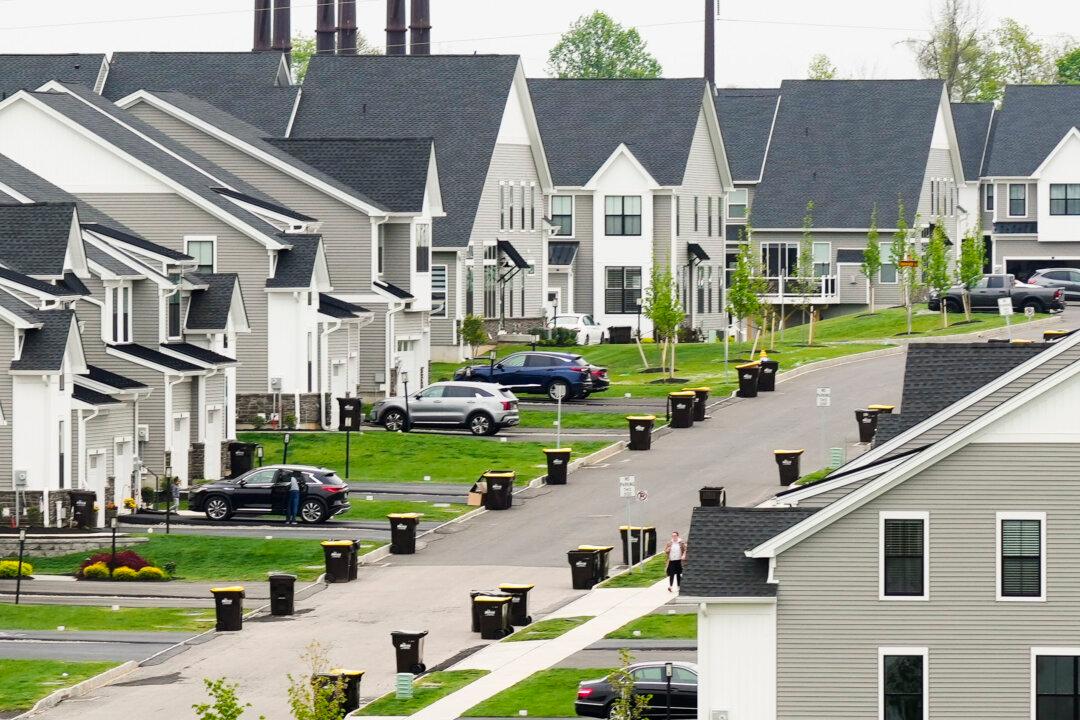“Shoppers see more homes for sale today than one year ago, and encouragingly, many of these homes have been added at moderate income price points,” Danielle Hale, Realtor.com chief economist, said in the report.
“But as this report shows, we still don’t have an abundance of homes that are affordable to low- and moderate-income households, and the progress that we’ve seen is not happening everywhere. It’s been concentrated in the Midwest and the South.”
Households earning $100,000 annually are in a similar situation, as they can currently afford just 37.1 percent of home listings—well below the 64.7 percent they could afford in 2019 and the 60.7 percent target for market balance.
A household bringing in $50,000 a year can afford only 8.7 percent of home listings today, down from 9.4 percent one year ago. The report states that one in three households in America are at this level.
NAR indicates that the U.S. housing market still needs 367,000 more home listings with a maximum price of $170,000 and 416,000 more homes priced at or below $225,000. More than 364,000 homes priced under $340,000 are also needed to close the affordability gap.
So where are the affordable options? The report names Raleigh, North Carolina; Des Moines, Iowa; Grand Rapids, Michigan; Columbia, South Carolina; and Columbus, Ohio, as locations making substantial progress toward increasing the availability of affordable homes.
“Listing prices don’t match first-time homebuyers’ budgets. If the promising trend of building smaller homes continues, that could be a meaningful step toward easing the housing affordability gap for more buyers.”

Among states, Iowa, Ohio, Indiana, Illinois, and West Virginia lead the nation in offering balanced housing market conditions. In most of these states, a household earning $75,000 can afford more than 45 percent of for-sale home listings.
Travis Bushaw, president of the Iowa Association of Realtors, told The Epoch Times that his state’s median single-family home price of $240,000 is well below the national median of $408,000 and has been attracting a lot of buyers from the West.
“We’ve seen a movement from California over the past couple of years, and it’s not just because of home prices,” he said. “In general, the cost of living is much more affordable here, including insurance, dining, groceries, and everyday expenses.”
Like the rest of the nation, Iowa experienced price increases following the COVID-19 pandemic, but Bushaw noted that Iowans still typically spend less of their monthly paychecks on mortgage payments than residents of other states.
While metro areas such as Des Moines or Cedar Rapids can command higher median prices—at about $375,000—the rest of the state offers many affordable options, especially for first-time buyers, Bushaw said.

“A lot of remote workers with no family or friends in the area have relocated here simply because the region offers them the opportunity to own instead of rent,” he said.
Bushaw also referred to the local climate as a “hidden gem,” featuring favorable weather during most of the year.
“We’re also seeing some seniors retiring in the area,” he said. “They can live comfortably here and not feel like they have a restricted income.”
While inventory is now at a three-month supply, Bushaw indicated that the number is still lower than average.
“We have about 24 percent more active listings for single-family homes now, and that’s giving buyers a better shot at a balanced market,” he said.
In 2002, a majority of homes were selling for more than the listing price, but now, they’re selling at about 98 percent of the listing price, he said.
“That gives buyers a little bit of negotiation room that we didn’t see a couple of years ago,” he said.
Meanwhile, Austin, Texas; Salt Lake City; and Denver also made substantial progress in adding more affordable listings—by an average of 20 percentage points.
On the opposite end, higher-income households have almost total access to the housing market. Homebuyers earning $250,000 or more can afford at least 80 percent of home listings.







